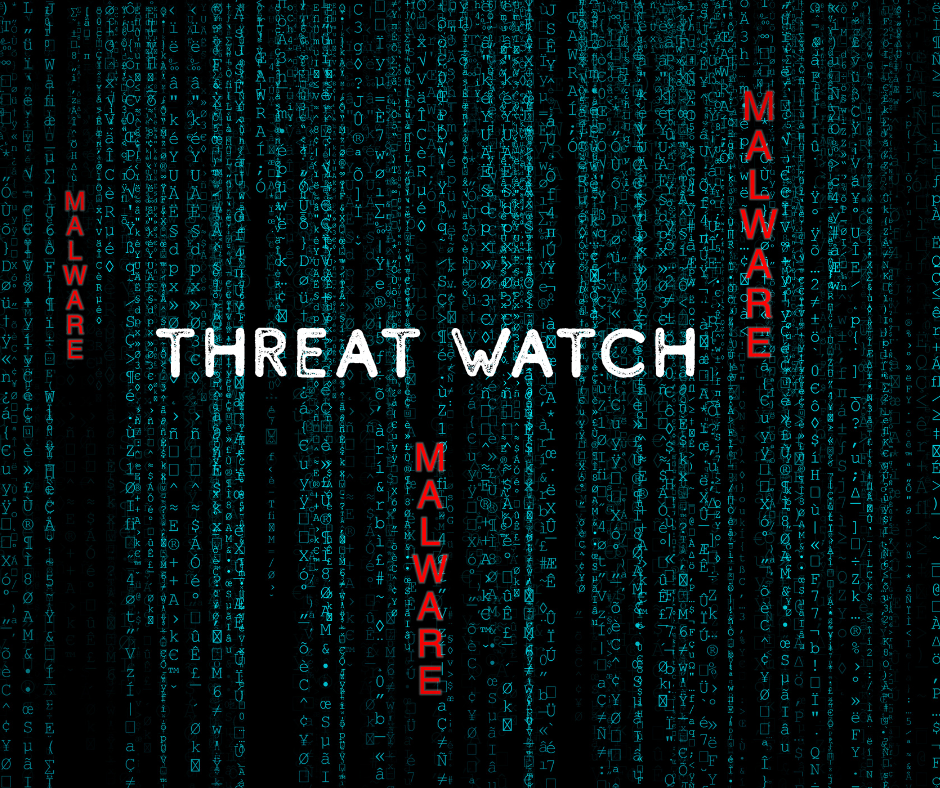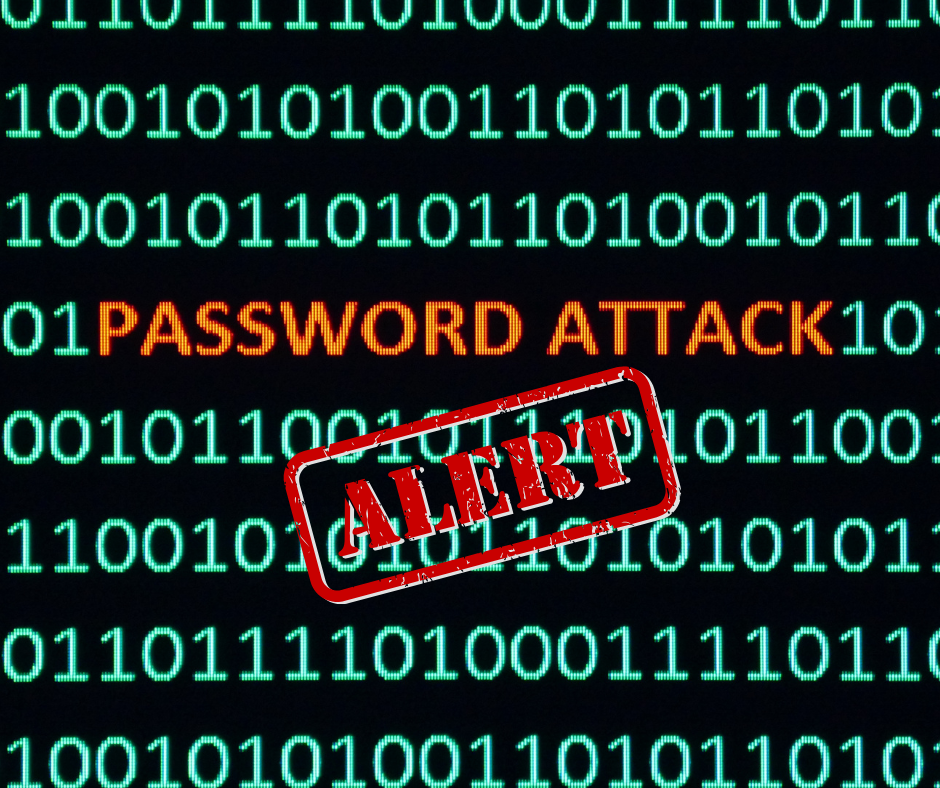DEFENSESTORM
Cyber Security RESOURCES
Thought leadership and customer testimonials are some of the many ways we build a community of trust. These cyber security resources highlight our recent research and success stories.

DEFENSESTORM
Thought leadership and customer testimonials are some of the many ways we build a community of trust. These cyber security resources highlight our recent research and success stories.


Threat Alerts
A new phishing tool called Astaroth threatens the security of online accounts globally. This malicious tool bypasses two-factor authentication (2FA), which is meant to be a vital layer of protection for private accounts, enabling hackers to steal sensitive information such as usernames, passwords, credit card details, bank information, and more.

Case Studies
With over $8.8 billion in assets, Space Coast Credit Union (SCCU), serves approximately 677,000 members across 67 branches. Prior to their partnership with DefenseStorm, SCCU’s cyber risk management program relied on multiple network monitoring tools, not entirely integrated, which posed challenges in threat detection and reduced the efficiency of their data gathering processes.

Threat Alerts
On Friday March 28, 2025 CISA released a report with analysis of a new malware variant CISA has identified and named as RESURGE. RESURGE is a persistent malware that shares similar characteristics to the malware SPAWNCHIMERA. Please review the information that is taken directly from CISA and compiled by DefenseStorm Director of Cyber Threat Intelligence to learn more about RESURGE, its capabilities, and attack vectors.

Case Studies
Reliant Credit Union, with assets amounting to nearly $700M and a membership of 46,615, serves its community through ten offices and a committed team of 171 employees. As cybersecurity threats became more sophisticated, the credit union faced challenges in managing and mitigating risks effectively. Reliant recognized this urgent need and embarked on a transformative journey to enhance its ability to monitor, manage, and report on cyber events.

Threat Alerts
Business Email Compromise (BEC) is a sophisticated email scam where cybercriminals trick victims into transferring funds or sharing sensitive data. Learn more about common BEC attack types, how they work, and essential strategies for protection.

Threat Alerts
Microsoft 365 accounts are facing an extensive password spraying attack by a Chinese botnet, which possesses the ability to bypass multifactor authentication (MFA). This botnet comprises over 130,000 compromised devices, utilizing stolen credentials from infostealer accounts and then systematically attempting to log into M365 accounts globally.

Insights
With recruiters using LinkedIn as a very popular way to research and reach out to potential candidates, bad actors have begun to try to abuse people’s trust and desire for new challenges to lure them in with fake job opportunities as a way capture their credentials and deliver additional malware.

Insights
The IRS has already made several reminders for individuals to be aware of bad actors trying to take advantage of this season to gain access to your personal data and finances. Read tips and guidance taken directly from the IRS’ website, including associated links to stay safe during tax season.

Fraud Squad
As the holiday season approaches, there’s a beautiful spirit of giving that fills the air, with many of us feeling inspired to spread joy and lend a helping hand to those in need. However, the rise of charity scams that prey on the kind-hearted are becoming more and more common. Read about one woman who opened her heart – and her wallet – to a charity, only to end up scrambling to secure her accounts and recover money lost to scammers.

Insights
Take a minute and think about the password(s) you use in both your professional and personal capacities. When passwords are reused or weak, they are far more susceptible to being stolen. One stolen password can lead to a detrimental data breach for your organization.

Case Studies
First Financial Bank, with assets totaling over $14 billion and a workforce of 1,415 employees across 83 offices, encountered significant challenges in managing, monitoring, and reporting on cyber risk. The bank needed an efficient, integrated solution to handle incident monitoring and response while strengthening its overall cyber risk management program.

Case Studies
First Financial Bank faced challenges due to inconsistent risk assessments and reporting. Governance and audit preparations were scattered across multiple spreadsheets, resulting in a lack of the quantitative data necessary for effective risk evaluation. Learn how DefenseStorm’s Governance and Risk modules streamlined First Financial’s audit preparation process and matured their cyber risk management program.

Insights
To prepare for the FFIEC Cybersecurity Assessment Tool sunset date, financial institutions should identify a new framework around which to build their programs and self-assess themselves against that framework using a risk based approach to ascertain that the appropriate level of maturity is reached within various areas.

Threat Alerts
As the excitement of Black Friday and Cyber Monday draws shoppers in with unbeatable deals and discounts, it’s important to remember that the online shopping frenzy also brings increased cybersecurity risks.

Fraud Squad
Contrary to the common belief that fraud schemes are quick scams leading to minor losses, one woman was deceived into thinking she was a prime suspect in a money laundering operation for three long months. Fearing imprisonment or deportation, she became entangled in the deception and lost $300,000 before discovering it was a scam.

Insights
With the remote workforce not showing any signs of slowing down, many organizations are starting to evaluate and implement ways to access these systems through the usage of Remote Access Tools. While these tools provide an incredible amount of value to an organization to stay connected and retain access, Remote Access Tools are a significant attack vector in cybersecurity and are something that should not be taken lightly.

Datasheets
DefenseStorm provides KnowBe4 as an add-on service with the goal of improving security awareness among employees and, as a result, strengthening your human firewall. KB4 is the world’s largest integrated platform for security awareness training and simulated phishing. It addresses the critical threat of social engineering by educating employees on how to identify and respond to cybersecurity threats.

Datasheets
Strengthen your proactive cybersecurity, fraud prevention and threat visibility strategy using a layered, full cycle approach with DefenseStorm and Allure Security.

Fraud Squad
Election years are a critical moment for any democracy. Unfortunately, they are also prime opportunities for hackers and cybercriminals to exploit the heightened political atmosphere. A voter registration verification scam is a common and deceptive tactic employed by cybercriminals. These scams specifically target individuals, tricking them into divulging sensitive personal information under the guise of verifying or updating their voter registration status.

Webinars & Videos
DefenseStorm Board member and former chairman of the NCUA, Rodney Hood emphasizes the importance of enhancing risk management practices for financial institutions, urging them to extend their risk disciplines to cybersecurity and information security. He highlights the necessity of conducting thorough risk assessments in-house, defining risk appetite, and establishing meaningful metrics to foster effective governance and prepare for evolving risks.

Threat Alerts
CISA is alerting the public to be cautious of potential cyber scams following hurricanes. After major natural disasters, fraudulent emails and social media messages—often containing harmful links or attachments—are common.

Insights
Announcing the NEW GRID Active Cyber Risk Readiness Action Dashboard. The additions to DefenseStorm’s Cyber Security Risk Management platform delivers customers with an overview and actionable steps to stay ready against cyber attacks

Webinars & Videos
DefenseStorm’s Jessica Caballero takes an in-depth look at the updates made to NIST’s Cybersecurity Frameworks with the introduction of CSF 2.0. In this informative webinar, you’ll find out everything you need to know about the enhancements to the gold standard in cybersecurity frameworks and how CSF 2.0 will impact your institution.
This compelling webinar will covers:
Plus much more!

Datasheets
Tabletop exercises are valuable for financial institutions (FI) striving to maintain operational resilience and regulatory compliance. By regularly conducting them, FIs can ensure that they are well-prepared to navigate the complexities and uncertainties of the financial landscape. DefenseStorm Tabletops are simulation exercises used to test and improve the preparedness and response capabilities of an organization to various scenarios.

Insights
The Federal Financial Institutions Examination Council (FFIEC) released important information surrounding the commonly used Cybersecurity Assessment Tool (CAT).

Case Studies
With over $4B in assets, Georgia’s Own Credit Union serves nearly 240,000 members across 37 offices. Georgia’s Own CU originally signed with DefenseStorm in 2021 and continues to work in partnership to maintain a robust cyber risk management program.

Fraud Squad
During the process of purchasing a house, newlyweds Lilah Jones and her husband were deceived into sending money to a scammer. The fraudster used the scam, Business Email Compromise (BEC), to pose as the title company. False wiring instructions were provided, leading the couple to transfer a $130,000 downpayment to a fraudulent account instead of the title company.

Case Studies
Peach State Bank and Trust has been a long-term, valued client of DefenseStorm since 2016, when the two companies first partnered. John Chapman, Information Security Officer at Peach State Bank and Trust sat with DefenseStorm during the 2023 Client Appreciation Event to discuss the importance of cybersecurity for their financial institution and the benefits of partnering with DefenseStorm.

Datasheets
Threat detection is the number one priority for cybersecurity teams. If you don’t see the bad actors in your network, you can’t respond appropriately. Learn how DefenseStorm EDR uses a mix of technology and expertise to continuously look for threats.

Case Studies
A regional bank in the Midwest was functioning with two prime challenges. First, they had various different systems with which they managed risk – from risk assessments in one platform to managing network detection tools in another to different platforms for endpoint antivirus. The second issue and what motivated them to begin seeking another cyber risk management solution was that their current vendor for managed detection and response had lost the “personal touch” they desired.